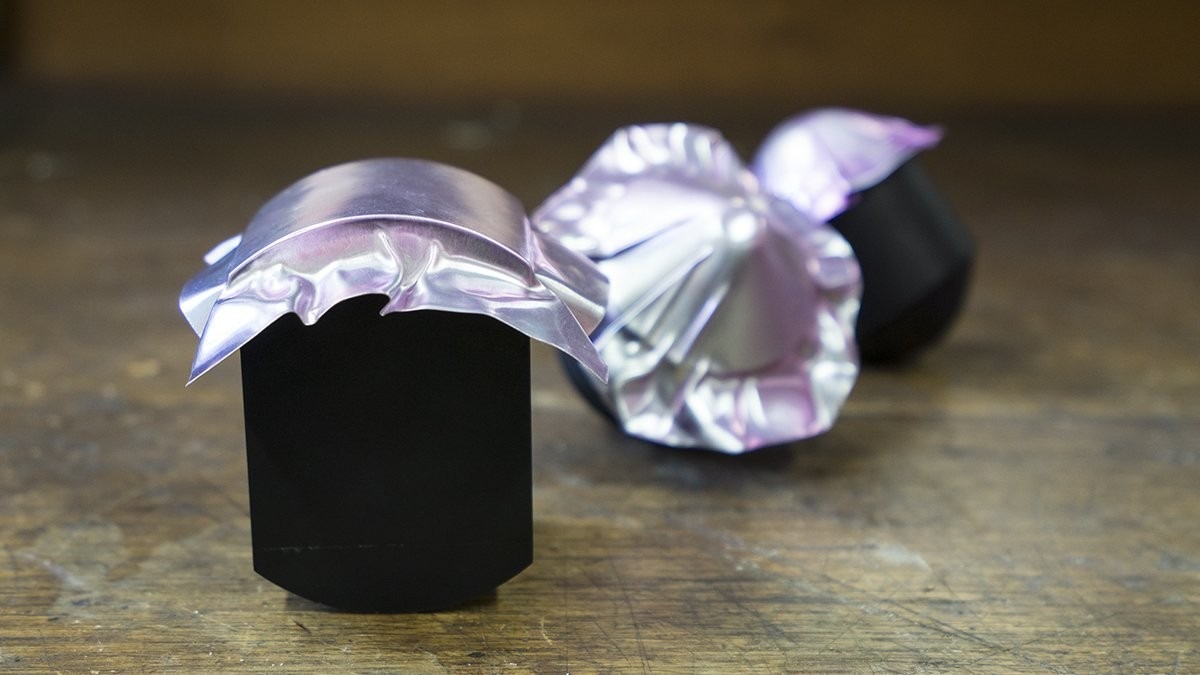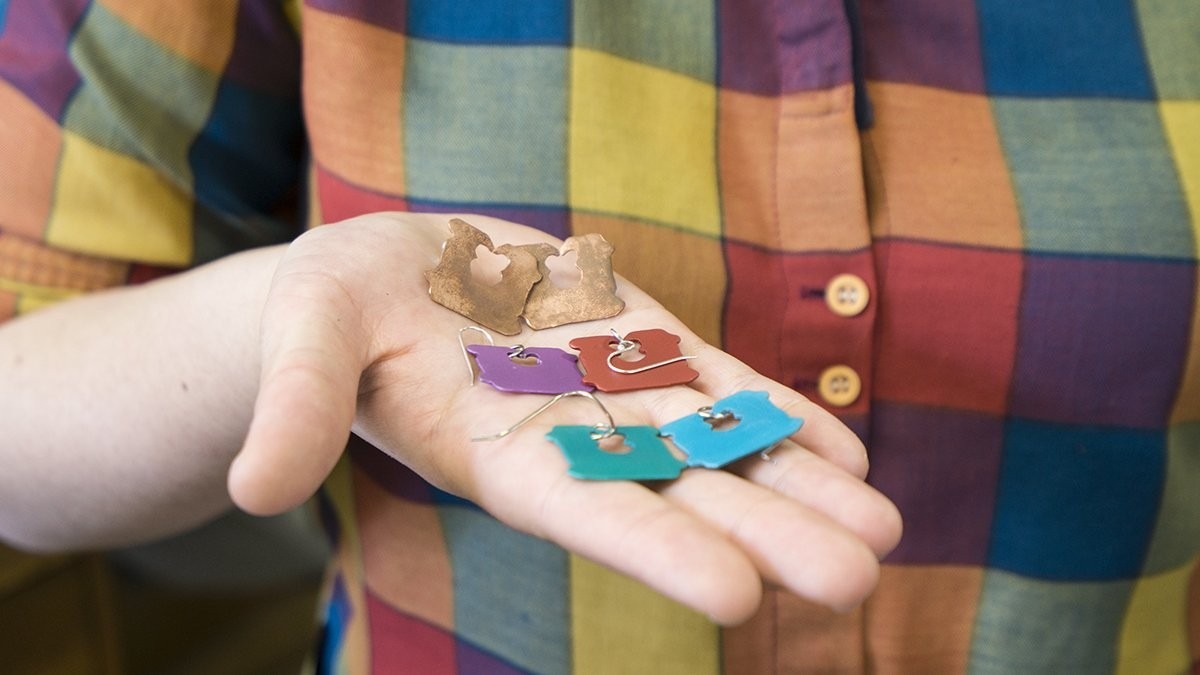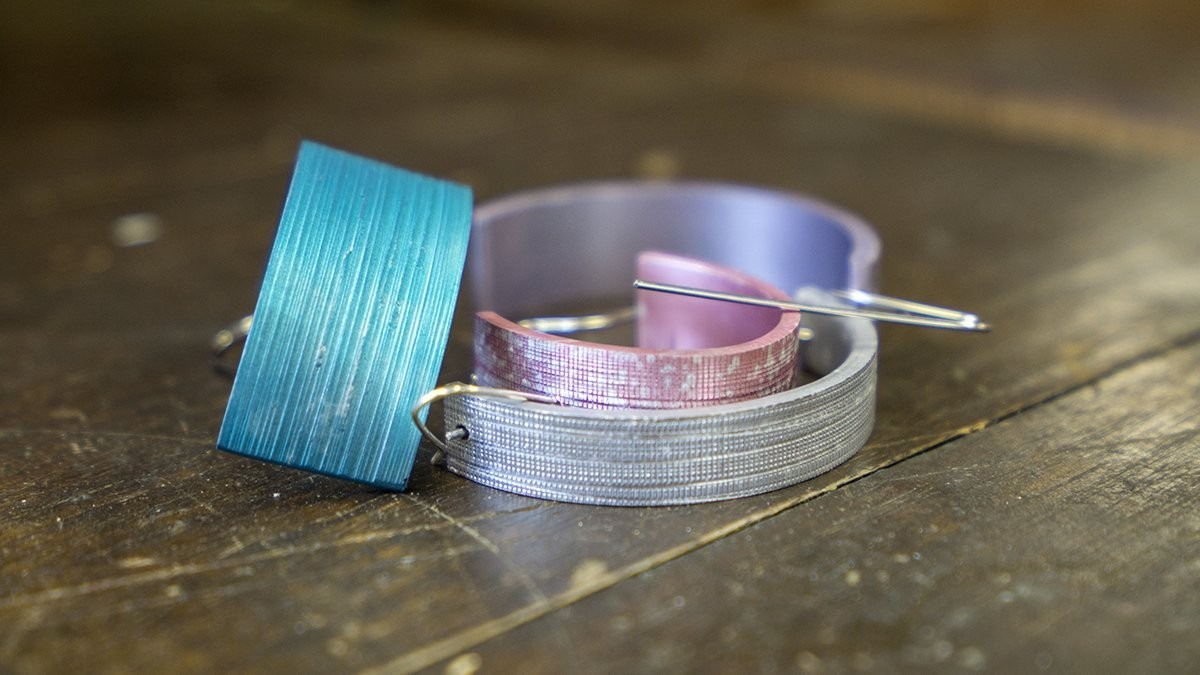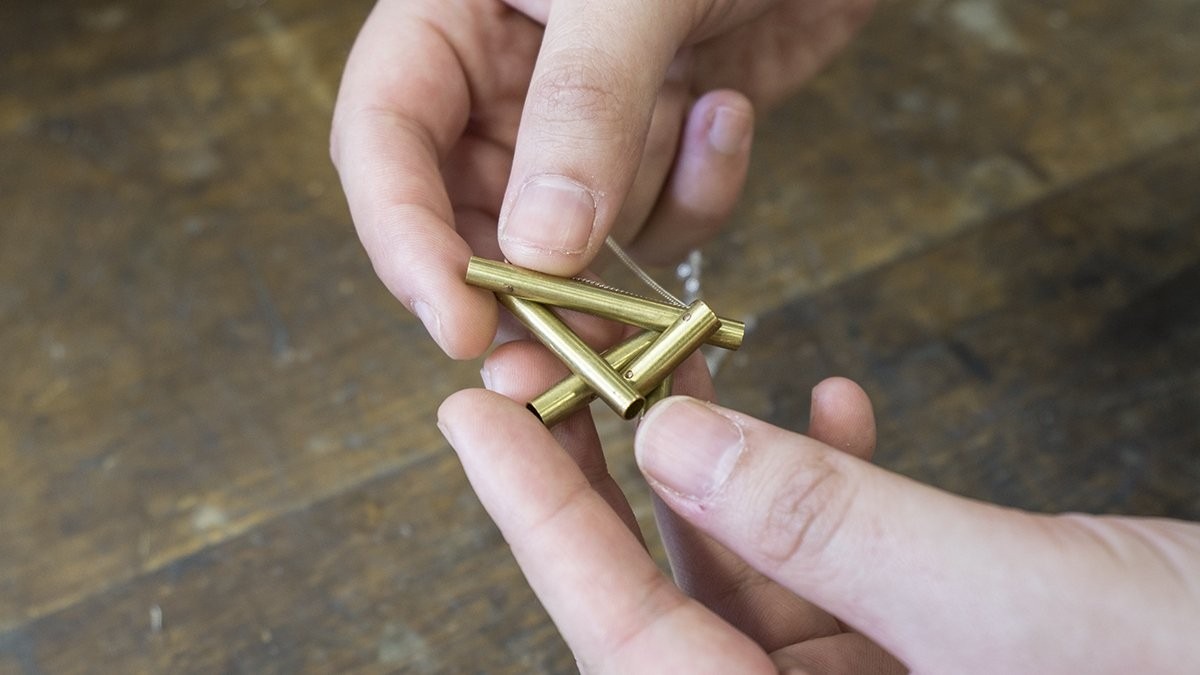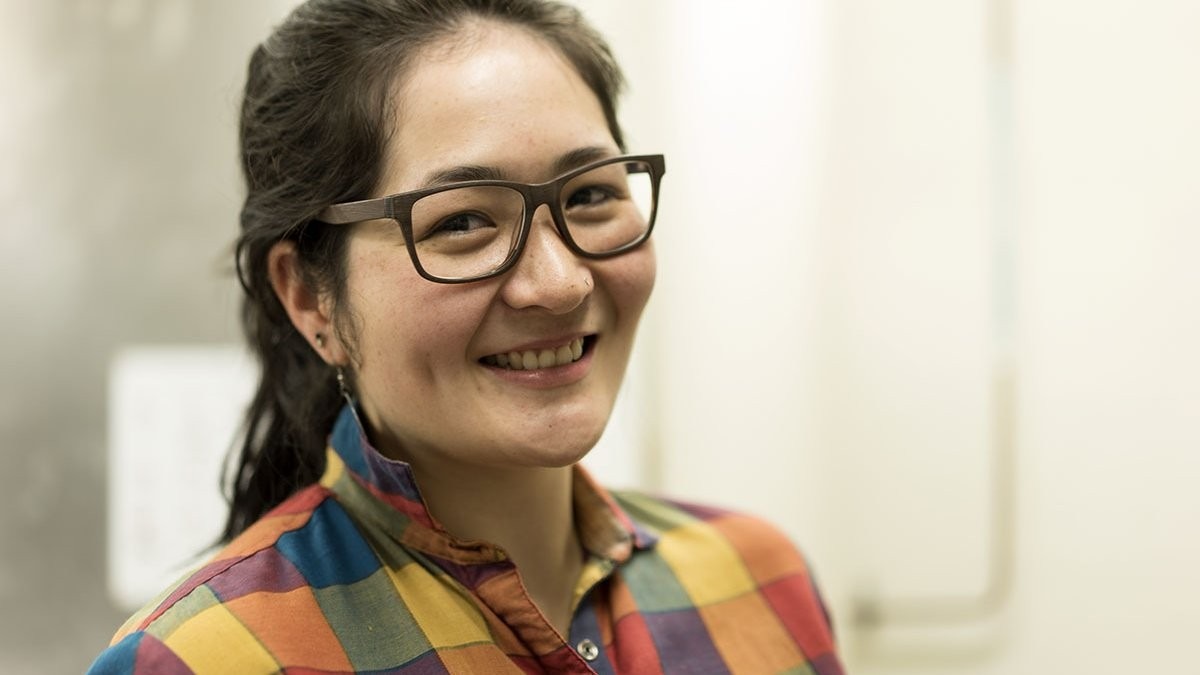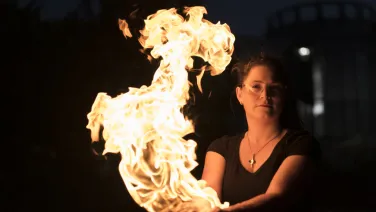
Your local alchemist
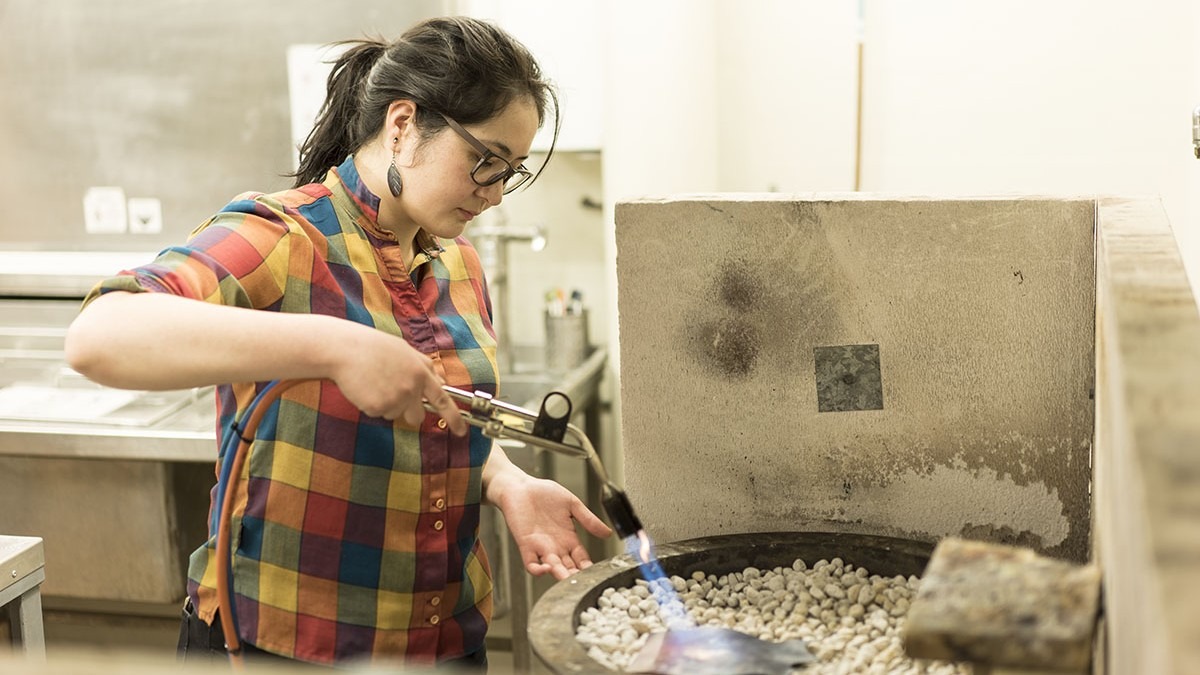
What happens when you combine the fields of chemistry and art?
Alchemy.
Def /ˈælkəmi/ the process of taking something ordinary and turning it into something extraordinary.
I meet Sasha Whittle at the Jewellery and Object workshop at the ANU School of Art. We walk past hanging matrixes of silver, copper and gold hanging in cabinets. The room smells like metal and sawdust, and there are students scattered across the room; each intensely focused on their end-of-year creations.
It feels oddly medieval, with people banging on sheets of metal and firing copper over a bed of rocks. I ask Sasha what they’re doing.
“Annealing, they have to get the temperature up to a certain point to relax the crystals in the metal before it is malleable enough to shape”, she says.
Sasha is three years into a flexible double-degree in Visual Arts and Science. Her focus is in silversmithing as well as chemistry, and she explains that the two fields actually go hand-in-hand; with chemistry helping to inform her jewellery making.
“My knowledge in chemistry helps me all the time when I’m making things”, says Sasha. “For example, when I learned how to do aluminum anodising – putting colour onto aluminum – I could process what was happening and pinpoint where I was going right or wrong.”
With the culmination of silversmithing and chemistry, Sasha has found herself dipping into science communication as well. Inspired by the way that chemistry helps inform her art-making, she decided to make infographics for silversmiths and jewellers that explain the science behind metal work.
“After learning about black body radiation in physical chemistry - essentially the process of metal glowing when it is heated - I wanted to create something easy to use that could help guide people when working with different metals. So I started Your Local Alchemist.
“I really don't think that there's a point to doing science if there's no way to get it across to get people, or to get people to care. And the same goes for my art - I think it’s important for it to start a conversation.”
Sifting through her desk, Sasha shows me some of the pieces she has made throughout the year that bring together these elements; earrings that have been cut in the shape of bread tags - part of a tool-making course for a series of production pieces; pendants that spin and come apart, that Sasha hopes can help people with anxiety.
“Fidgeting has been known to help people focus and calm themselves. When I made these pieces I was reflecting on objects like meditation stones and fidget spinners. Turning them into jewellery enables them to blend into the everyday.”
Sasha’s ability to make extraordinary things from the ordinary isn’t just limited to silversmithing. Among a long list, she works at the ANU Square One coworking space - helping interdisciplinary students work collaboratively on creative startups.
Sasha explains that “it is just so important to have a diverse set of skills”.
Do you believe in alchemy? I do now.
If you feel torn between science and art, why not combine them in a flexible double-degree at ANU.

